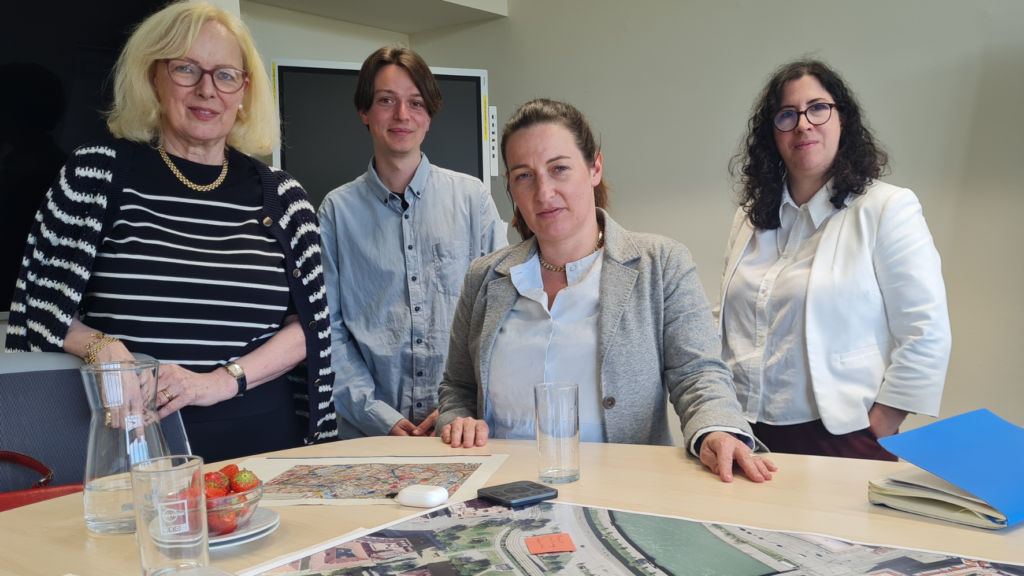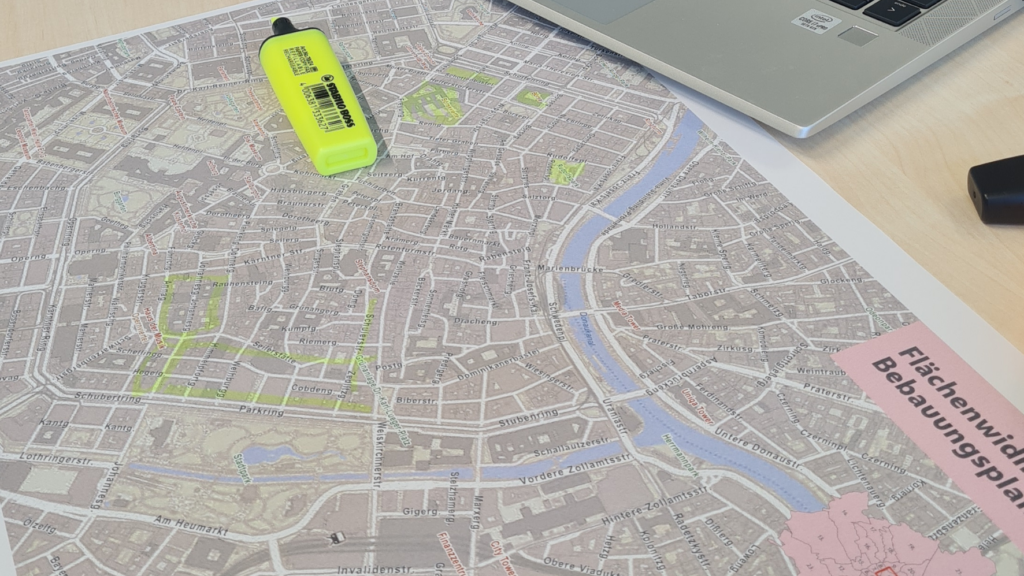As part of her research project “Learning Journey – Walking through the Innere Stadt”, Cornelia Dlabaja, Professor of Sustainable Urban and Tourism Development, is investigating key challenges and solutions for urban development in Vienna’s first district. The focus is on how planning processes can be made more sustainable, inclusive and livable – for residents, tourists and businesses alike.
Four places, many perspectives: The case study
In a first step, Dalabja analyzed four central squares in the inner city together with the relevant stakeholders: Michaelerplatz, Schwedenplatz, Heldenplatz and Albertinaplatz. In particular, the quality of the public space, the density due to tourism, traffic planning, ownership and everyday use were examined. Methods such as stakeholder analyses, walks with residents and decision-makers, interviews with stakeholders and social space analyses with international students were used.
The diversity of interests – from residents to tourists and entrepreneurs – showed just how complex the requirements of future planning processes in the city center are. The challenges range from accessibility and traffic safety to climate adaptation and quality of stay through to the often-opaque ownership structures that complicate planning processes.
Lessons to learn: What urban planning needs in the 1st district
In April 2025, Dlabaja invited representatives from politics and planning to a round table to work out key aspects and findings for future urban development projects. The focus was on the perspectives of local planning institutions and district politics, as well as the impact of regenerative tourism on local neighborhoods in the district.
Elisabeth Tanzer (resident and district councilor), Melanie Salis-Samaden (resident and district councilor) and Tarek Diebäcker (planner at Grätzellabor Innere Stadt) took part in the workshop at FHWien der WKW and the following insights for the future design of urban development projects emerged from their discussion:
- Networking and cooperation: A network is needed that involves all relevant stakeholders – from municipal authorities and district councils to local initiatives and businesses – at an early stage and on an ongoing basis. This is the only way to make complex ownership structures and different interests transparent and develop solutions together.
- Transparent ownership structures: The example of Schwedenplatz showed how important it is to clarify ownership structures before planning begins. Failure to involve individual landowners can massively delay or even prevent projects.
- Holistic design instead of patchwork: The so-called “patchwork carpet” of individual measures is often the result of budget constraints and a lack of overall strategy. An overarching design concept that is supported by all political levels could provide a remedy here.
- Participation and motivation: The participation of the population is essential but often reaches its limits in the first district. Many residents are discouraged by lengthy processes and low chances of success. New formats are needed to bundle concerns and incorporate them into planning in a targeted manner.
- Climate adaptation and quality of stay: Greening, cooling and a better quality of stay will be the focus in the coming years. Technical hurdles such as underground cables make implementation difficult, but there is potential for temporary solutions and best practices from other cities.
- Traffic and orientation: Traffic calming in the first district is a key issue. A digital registration system for buses and an improved guidance system for pedestrians and tourists could significantly improve safety and orientation.
Outlook: Further steps in the research project
The results of the “Learning Journey” will be incorporated into a white paper developed by Cornelia Dlabaja, which will formulate concrete recommendations for action for politicians and administrators. The aim is to secure Vienna’s city center as a livable, sustainable and diverse space – for everyone who lives, works or visits here. The findings will be presented at the upcoming Städtebundtag and should serve as an impetus for urban development processes far beyond Vienna.

